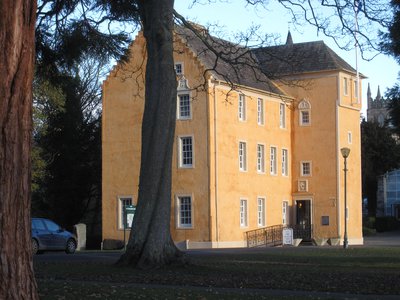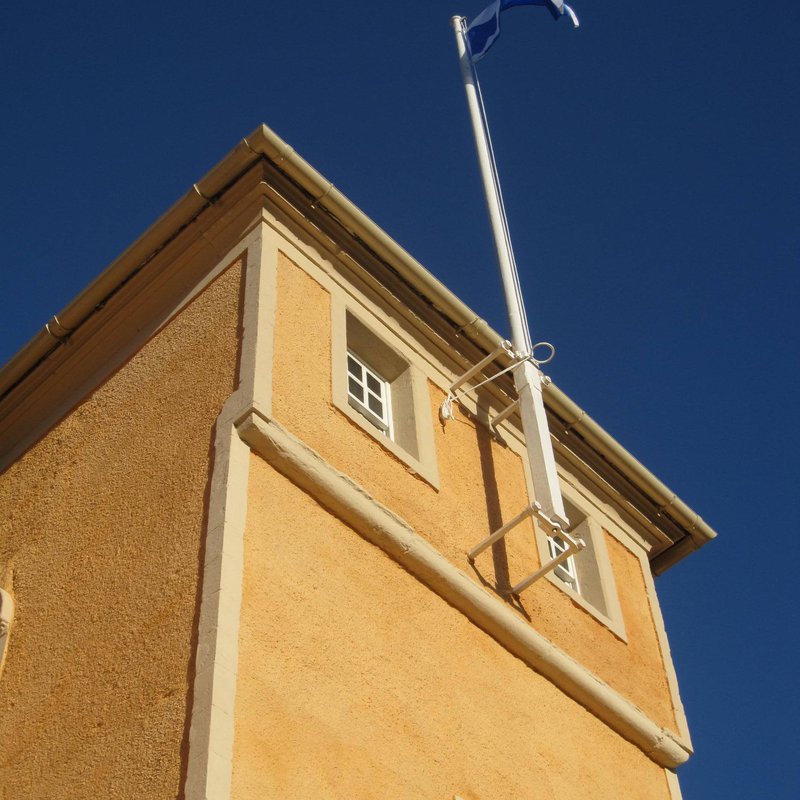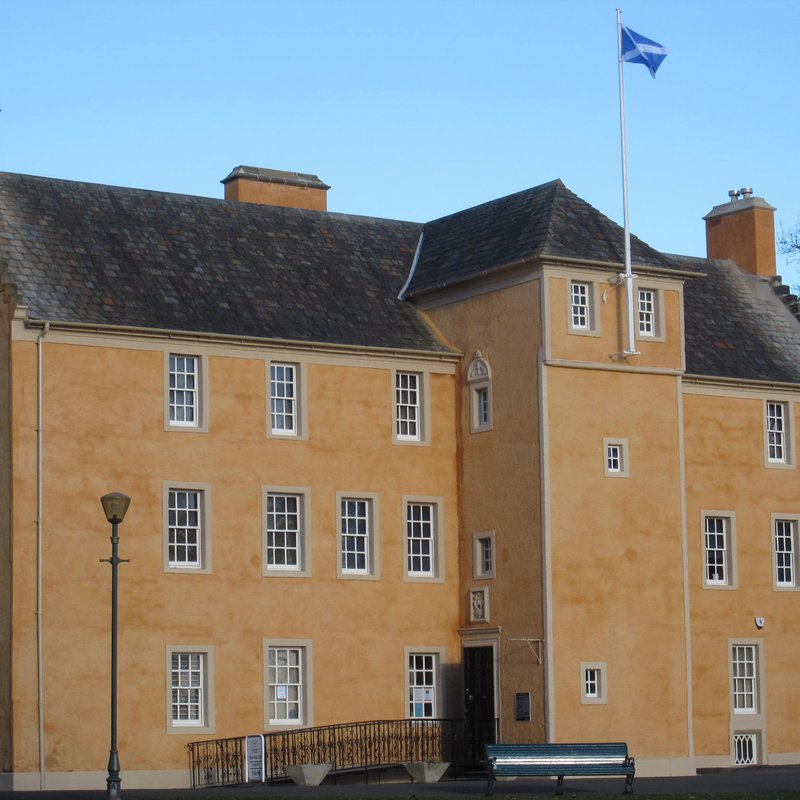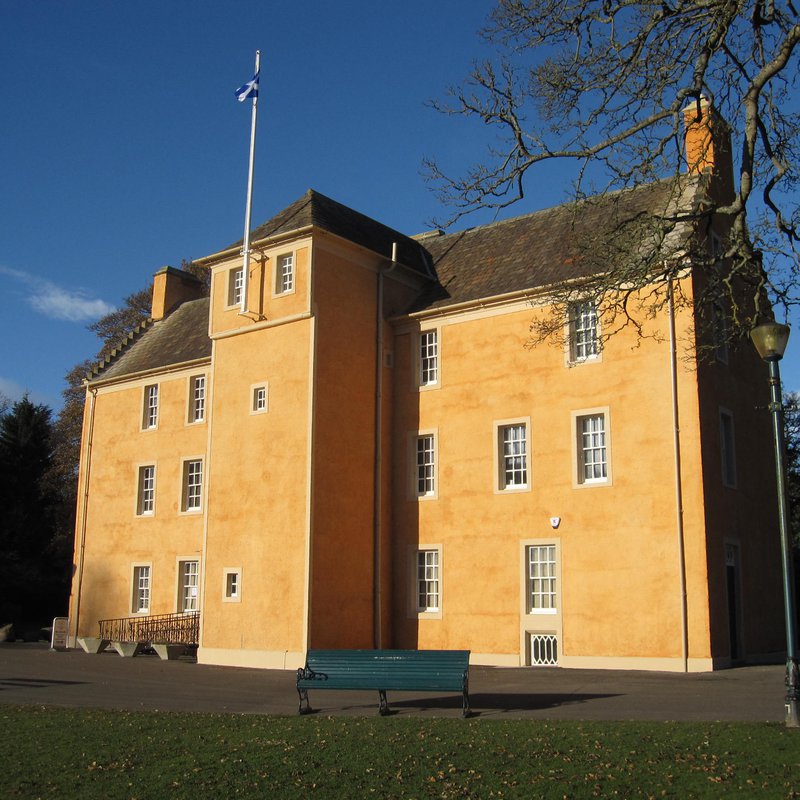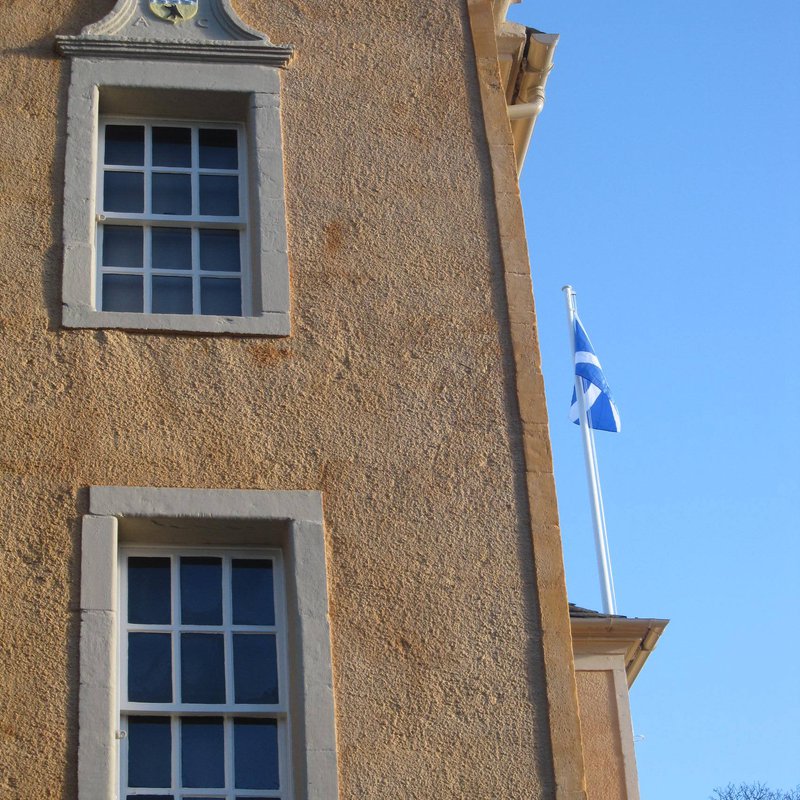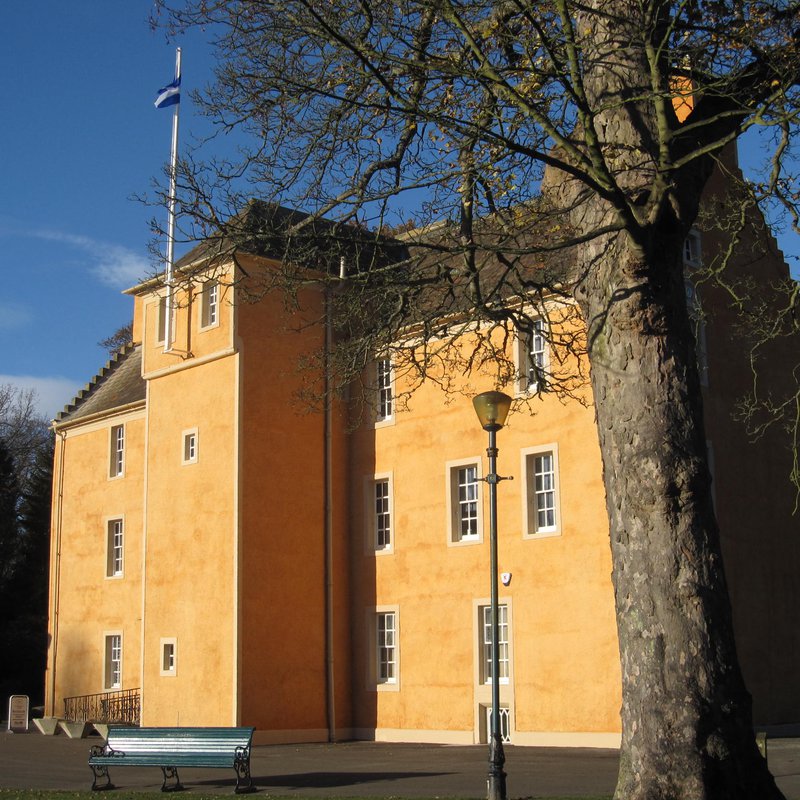Client: Fife Council Property Services for Libraries, Arts and Museum Service
Project Site: Pittencrieff House Museum, Pittencrieff Park, Dunfermline
Project Scope: Investigation of historic external lime finishes, written specification
This is a typical example of our building advisory work allied to our analysis of building materials to effect informed decisions for specifying materials and working techniques for the reinstatement of external lime finishes.
The lead professional, a conservation accredited architect engaged our services to advise on the reinstatement of external lime finishes on the 17th century house. The house had been inappropriately cement ‘dry dashed’ sometime in the last century and when this started falling off in sheets, the decision was made to reinstate the external finishes in traditional lime harl and limewash. Our work began with a site visit to view the now stripped building to gain a better understanding of the rubble stonework beneath and its condition. On inspection, we were also able to identify remains of original finishes including a traditional ‘Copperas’ limewash, distinctive by its gingery ochre colour. Our knowledge of the building materials of the area in the 17th century led us to believe that both the building stone, building lime and aggregates were locally derived. The building stone is a distinctive ‘honey’ coloured medium coarse grained sandstone found in abundance in the Dunfermline area, the building lime was distinctly a Charlestown lime and together with sand collected from the north shore of the Forth (identifiable with pieces of broken shell and unburnt coal fragments) formed a moderately hydraulic lime mortar. The mortars for both the original construction and the finishes are one and the same and were made by slaking quicklime and sand together in one operation as a ‘hot lime’ mortar. The colouring agent for the limewash was identified as iron sulphate, which was extensively used in textile dyeing (at this point in time Dunfermline was home to a great many hand loom weavers before the industrialisation of the linen industry in Dunfermline). The nearby Merchant’s Palace in Culross is also finished in a similar coloured limewash.
For the most part, the rubble masonry was in reasonable condition and not suffering from water ingress and dampness issues following the removal of the dry dash finishes. Our attention was then drawn to the detailing of the building and in particular how rainwater was collected and directed off the roof, the state of any mortar skew fillets and unprotected features such as the crow steps. Together with our understanding of the building, the construction materials, the level of exposure of the building, environmental factors such as salt laden air (from the River Forth) and the intended time of year the works were proposed to be carried out, we were able to develop specifications that were ‘fit for purpose’ and easy to communicate to the building team, Fife Council Building Services’ Conservation Unit, a team we had previously had a hand in developing through our skills and knowledge training.
Our role included inspecting the works at the various different stages to check both the quality of the work and conformity to the specifications. This meant we were on hand to offer advice and support to the team to ensure the success of the work. Once again, Pittencrieff House Museum is the jewel in the crown of Pittencrieff Park, a gift to the people of Dunfermline by Andrew Carnegie.
